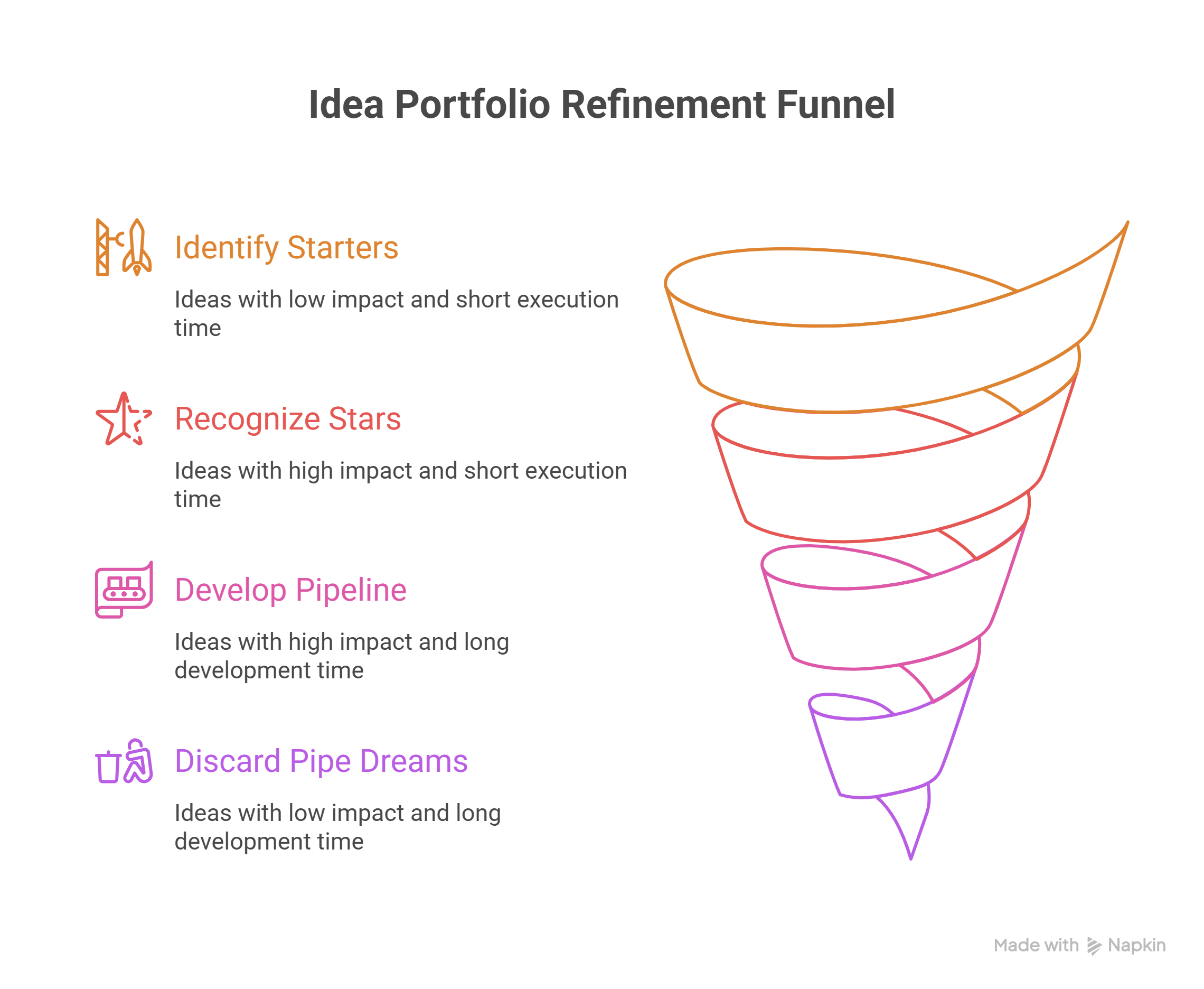Idea Shortlisting
After generating a large quantity of ideas, the next step in design thinking is to filter and prioritize them to find the most powerful ones to pursue. Two primary frameworks are used for this: the Desirability, Feasibility, Viability (DFV) matrix and the Impact-Time matrix.
1. The DFV Matrix
The DFV matrix is a fundamental rubric of design thinking that helps evaluate an idea based on three core dimensions. The most powerful ideas are at the intersection of all three, creating a "trinity" that ensures a solution is both meaningful and sustainable.
- Human Desirability: Does the human being truly want this solution? It's crucial to think beyond just the customer and consider all human stakeholders, including employees and suppliers, to find a "global optima" rather than a "local optima". This dimension looks for implicit desires, not just explicit needs or wants.
- Technical Feasibility: Can we build this solution with our current technological capabilities, given the time and budget constraints? An idea may be highly desirable, but if the technology isn't available, it's not a viable project for now.
- Business Viability: Does this idea make commercial sense and can it be profitable? Many startups fail by focusing on desirability and feasibility while neglecting this crucial aspect, as seen in the quick commerce industry, where customers are happy, but companies struggle with profitability.
The weight of each dimension can be adjusted depending on the organization's priorities, such as a startup prioritizing desirability to attract customers or an established company focusing on viability for better returns.
2. The Impact-Time Matrix
This matrix plots ideas based on their potential impact and the time it takes to realize that impact. It helps an organization create a balanced portfolio of ideas that can provide both short-term wins and long-term growth.
- Starters: These are ideas with low impact but can be executed in a short time. They are useful for building momentum and confidence within a team.
- Stars: These are the most valuable ideas, offering a high impact in a short time. They represent significant, quick wins for the organization.
- Pipeline: These are ideas that require a long time to develop but have the potential for a high impact. They are considered R&D-type projects that form the basis of a company's future growth.
- Pipe Dreams: These ideas have low impact and require a long time to be realized. These are typically the first to be discarded and are not worth pursuing.
By using these two rubrics, a large number of ideas can be methodically filtered down to a manageable portfolio, ensuring that the final selection is strategically sound and aligns with the organization's goals. The aim of design thinking is to introduce a systematic and disciplined approach to problem-solving, which is especially vital in creative processes.


No Comments